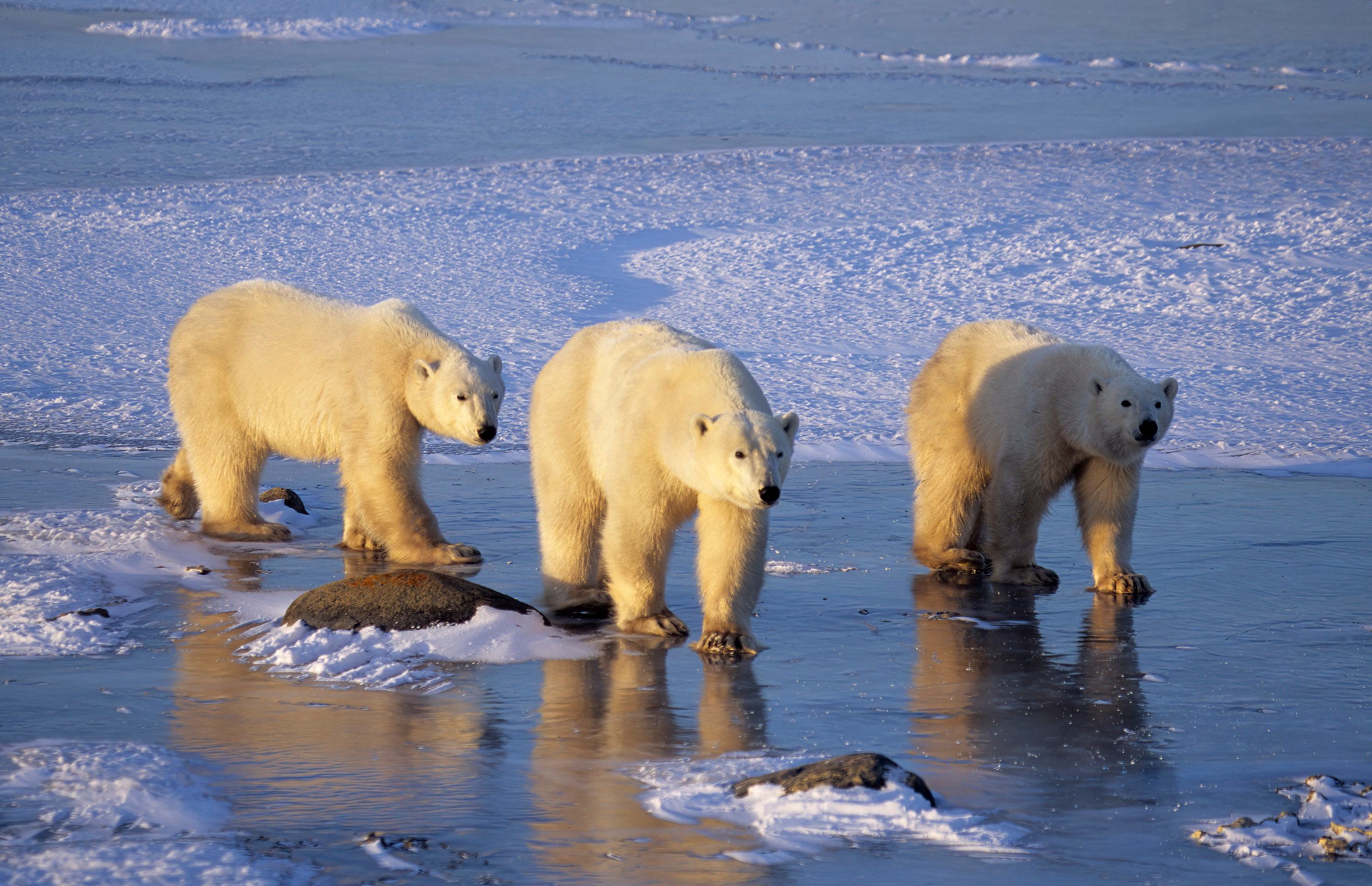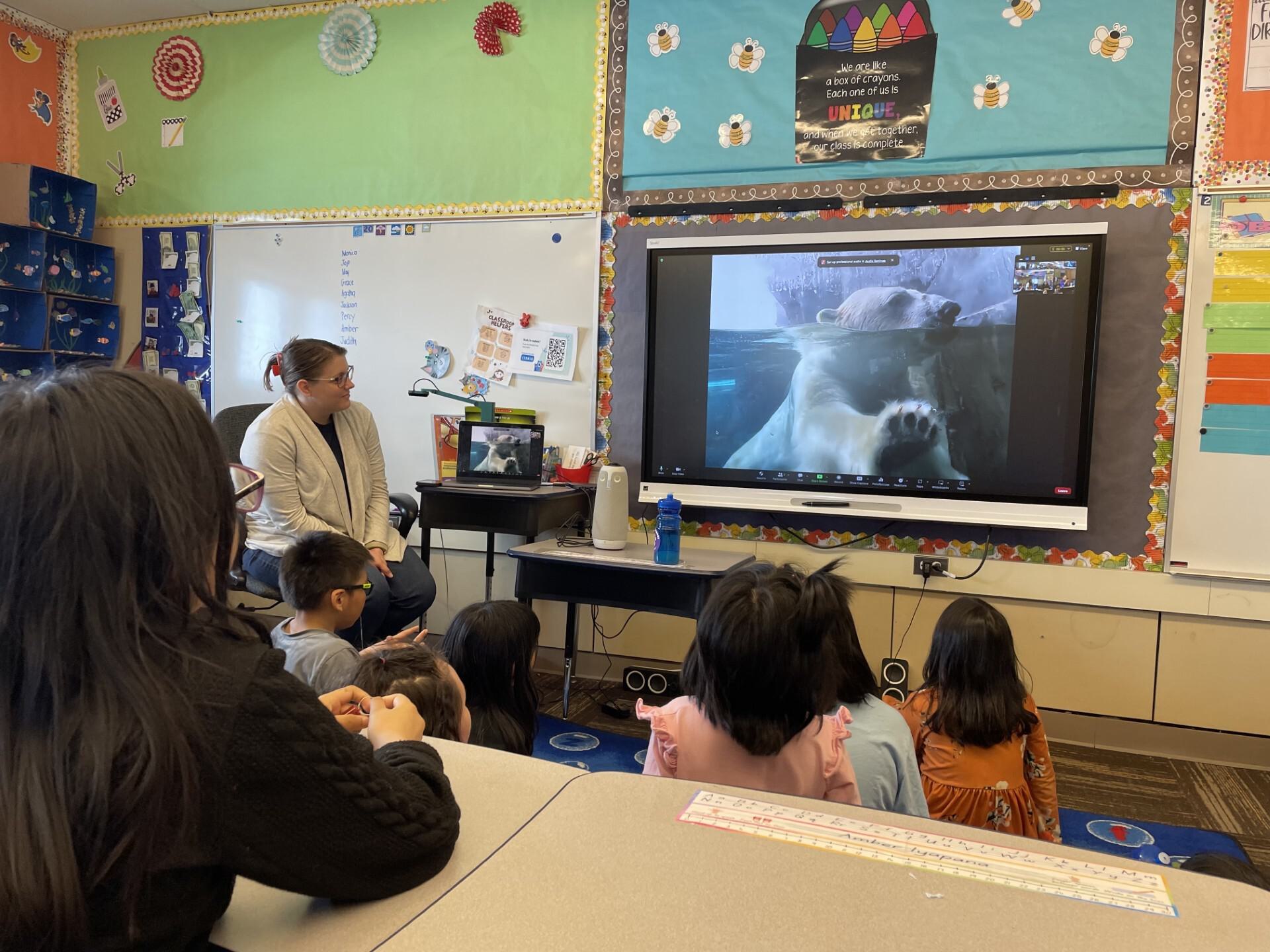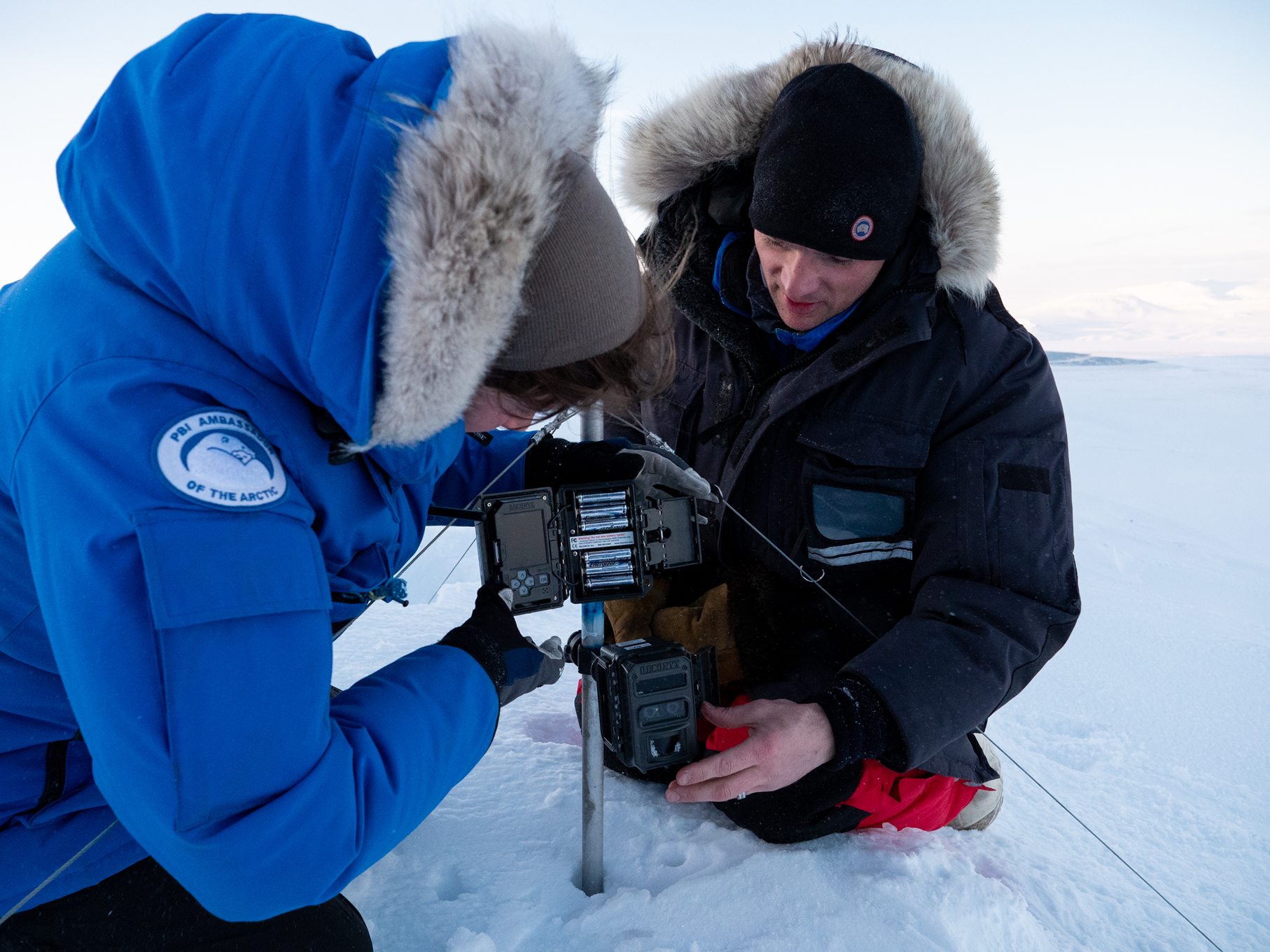St. Louis, MO (Nov. 21, 2024) Saint Louis Zoo has launched a new conservation initiative that will support research, fieldwork and outreach to help both wild polar bears in the Arctic and the people that live among them.
The Saint Louis Zoo WildCare Institute Center for Polar Bear Conservation is the first new conservation center created by the Zoo since 2019. It will be an adaptable conservation program dedicated to safeguarding the species.
The polar bear (Ursus maritimus) is listed as threatened under the Endangered Species Act and faces significant threats including loss of sea ice habitats due to climate change.

“It's incredibly important that we better understand and protect this species now more than ever,” said Center Director Julie Hartell-DeNardo, who also serves as the Kevin Beckmann Curator of Carnivores at Saint Louis Zoo. “We hope deepening the Zoo’s longstanding support of this species can make a real impact for these magnificent bears.”
The Center for Polar Bear Conservation is now one of 17 Saint Louis Zoo WildCare Institute centers dedicated to the conservation of animals and their habitats across the globe, from the hellbenders of Missouri to the frogs of Ecuador and Grevy's zebras in Africa.
“This center is an example of the Zoo’s holistic approach to conservation,” said Lisa Kelley, Ph.D., Executive Director of Saint Louis Zoo WildCare Institute. “This Center will bolster the conservation of polar bears through our pillars of wildlife management and recovery, conservation science and engaging the people who coexist with wildlife around the world.”
Center projects
Upon launch, the Center for Polar Bear Conservation will focus on initiatives including:
- Polar Bear Ear Tag Program
The Center will join an effort led by World Wildlife Fund (WWF) to develop polar bear tracking ear tags that could significantly improve research of the species. Today, researchers primarily use tracking collars to monitor polar bears in the wild, but the technology has only proven successful on adult females. Male necks are so thick that the collars would easily slide off, so WWF is working with technology companies to develop tags that can fit on bear ears to facilitate the possibility of tracking male and young polar bears.
- Alaska Native village polar bear deterrence support
The Center will support two Alaskan community-based programs aimed at reducing conflicts between polar bears and people.
The Zoo will work with WWF, the Alaska Nannut Co-Management Council and U.S. Fish and Wildlife Service to create a human-wildlife conflict avoidance program in two Alaska Native villages: Savoonga and Gambell. Both are located on St. Lawrence Island west of mainland Alaska.
The effort will provide the residents with non-lethal methods of deterring polar bears. Examples of these methods include noisemakers and lights.
These programs build upon on more than 10 years of partnerships between the Zoo and Alaska Native communities. Beginning in 2013, Zoo staff regularly visited five Alaskan Native partner villages to facilitate STEM-based educational programs in local schools and support several community-led projects.

“Polar bear movements have been changing especially in the last five years,” said Lisa Lidgus, the Center’s Community Engagement Coordinator and Conservation Education Liaison at the Zoo. “Our village partners are concerned about the rate that polar bears are coming into their communities, so we hope this program will have a big impact for them and polar bears.”
- Maternal Den Study

The Center also will continue the Zoo’s support of scientific studies led by Polar Bears International, the only nonprofit dedicated solely to polar bears and Arctic sea ice. Through Polar Bears International's Arctic Ambassador Center network, the Center connects with zoos, aquariums and wildlife parks across North America and Europe to amplify outreach on climate change and solutions.
Since 2010, the Zoo has dedicated funds to support Polar Bear International’s Maternal Den Study of polar bear behavior in the Arctic. These studies document the denning behavior of polar bear mothers and their emergence with cubs from their den, which is crucial since denning is the most vulnerable time of a polar bear's life. The more we know about polar bears the better poised we are to protect them. Study results help wildlife managers and governing authorities develop plans to protect and preserve polar bears for future generations.

- Outreach
The Center also will use the Zoo’s platform to inform the public, amplify indigenous perspectives and motivate action on one of the greatest threats to polar bears: climate change. The projected loss of essential sea ice habitats caused by rising temperatures is expected to greatly reduce the species' global population size. This outreach will include updates to video journals at the Zoo’s polar bear habitat, McDonnell Polar Bear Point, that share Alaska Native communities’ perspectives and stories about the species.
About the Saint Louis Zoo
Home to over 16,000 animals, representing nearly 500 species, the Saint Louis Zoo is recognized worldwide for its innovative approaches to animal care and management, wildlife conservation, research, and education. One of the few free zoos in the nation, the Saint Louis Zoo is the most-visited attraction in the region. Accredited by the Association of Zoos and Aquariums (AZA), the Saint Louis Zoo is part of an elite group of institutions that meet the highest standards in animal care as well as provide fun, safe and educational family experiences. The Saint Louis Zoo and the other AZA-accredited institutions collectively dedicate millions of dollars annually to support scientific research, conservation and education programs. For more information, visit stlzoo.org.

